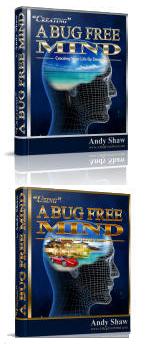Diaphragmatic breathing is used in many traditional martial arts, but I don’t think that all martial artists completely realise the full extent of how important this really is. It actually helps us on a number of different levels.
But first though for anybody new to martial arts (or this concept) lets have a look at what diaphragmatic breathing actually is. Most adults breathe into the top of their lungs and as they do so their shoulders and collar bones rise slightly. But with diaphragmatic breathing, the diaphragm (which is a large internal muscle at the base of the lungs) is used. This pulls down on the lower part of the lungs, opening up the whole of the lungs and thus pulling in more air (hence more Oxygen). When breath is pulled in this way, the shoulders and collar bones do not rise. However, as the diaphragm pulls down it displaces the lower torso organs and the stomach area in particular is pushed outwards.
Young children and animals naturally breathe this way.
Many people say that you “breathe into your stomach”. This is of course not physically possible, but that is how it feels. And sometimes looking for a feeling will help you to get the correct technique, even if it is not actually possible.
So lets look at some of the many ways in which diaphragmatic breathing helps us:
Technique
As above, when you pull the breath in with your diaphragm and it feels as if it is going down to your stomach (otherwise known as hara or dan tien). This is where your centre of gravity is, so by having your focus on that part of your body, you can start to move more fluidly. When you movement is generated by your centre of gravity the rest of your body follows naturally, whereas if you lead with shoulders or upper torso (which is common with beginners), you drag your centre of gravity which will slow you down and compromise fluidity.
When you inhale with your diaphragm it has a relaxing effect on the rest of the body. Again this helps with the fluidity of movement as it helps to remove tensions from the rest of the body.
When you exhale rapidly from the diaphragm, it allows you to generate rapid muscular movement to drive your strike/punch/kick into your opponent. As the diaphragm is connected to the core muscles, it also assists with the over stability of your body and your ability to absorb any reaction force to the impact of your blow.
Masking Intent
In a conflict situation the last thing you want is for your opponent to know what you are planning to do and when you plan to move. It is instinctive to inhale before launching an attack. As mentioned above, most untrained people breath into the top of their lungs and their shoulders and collar bones rise up. When you see this, you get a warning that you are about to be attacked.
Even if you did not know this fact and your conscious mind does not notice, your unconscious mind will notice and give you that intuitive feeling that something is coming, giving you that tiny fractional bit more time to prepare or react.
When you inhale with your diaphragm your shoulders and collar bones do not rise so you don’t give away this little warning signal, so your opponent has less chance to react or prepare for it.
Calming the mind
Much is written these days about the effects of adrenaline, especially by those who are into reality based martial arts, and that is a good thing. One of the effects of adrenalin is that breathing becomes short and shallow. Oxygen tends to be pumped into the limbs ready for fight or flight, but the brain receives less oxygen which blunts the ability to think a way out of the situation. This can even lead to panic or freezing up.
Diaphragmatic breathing should be practiced during pressure training. That way when you are in a real street conflict situation you are more likely to be able to maintain diaphragmatic breathing rather than resorting to the short shallow breathing. This in turn allows you to draw in more oxygen which will allow you to function better both physically and mentally. It will keep you calmer.
If can use this to keep your calm when you are facing a violent assault, you can also use it in other areas of your life (problems at work, exam nerves, relationship tensions, even just stressed when stuck in traffic).
intuition
This is tied in with the section on calmness above. As mentioned earlier, the unconscious mind can pick up a lot of signals that the conscious mind misses. This is when we have a feeling of intuition, when we just sense or feel something but don’t really know how or where this knowing comes from.
However, a mind that is in a state of panic will not access this intuition as well as a calm mind. This is why you can sometimes fight/spar with a very experienced person and they just seem to read you like a book and know what your moves are almost before you do. They respond with what seems almost supernatural reactions. But what you notice from anybody with this ability is that they stay completely calm throughout, allowing themselves to access this intuition.
Health
Firstly, we need oxygen to live. Oxygen has great healing properties and can even kill cancer cells. Diaphragmatic breathing pulls more oxygen into the body then just breathing into the top of the lungs.
Also, toxins always gather in the body, including in the lungs. Those who only breathe into the top of their lungs do not clear the toxins from the bottom of the lungs. People who are used to diaphragmatic breathing will pull the breath right down to bottom of the lungs and clear these deep rooted toxins.



